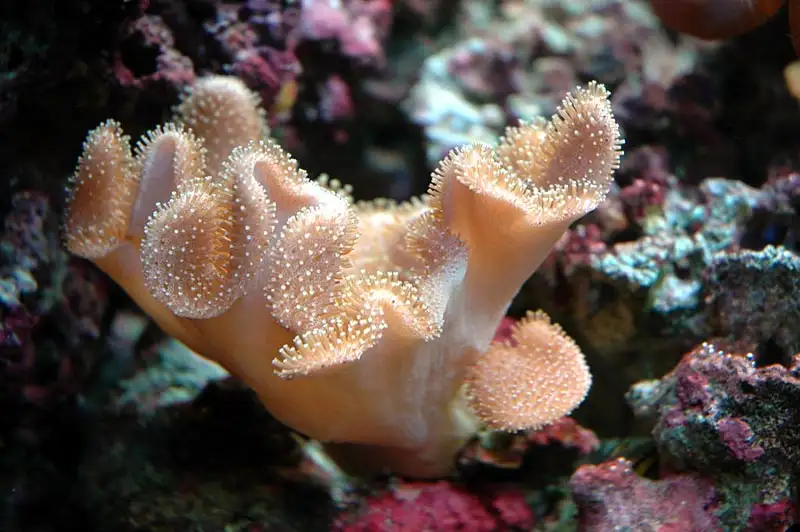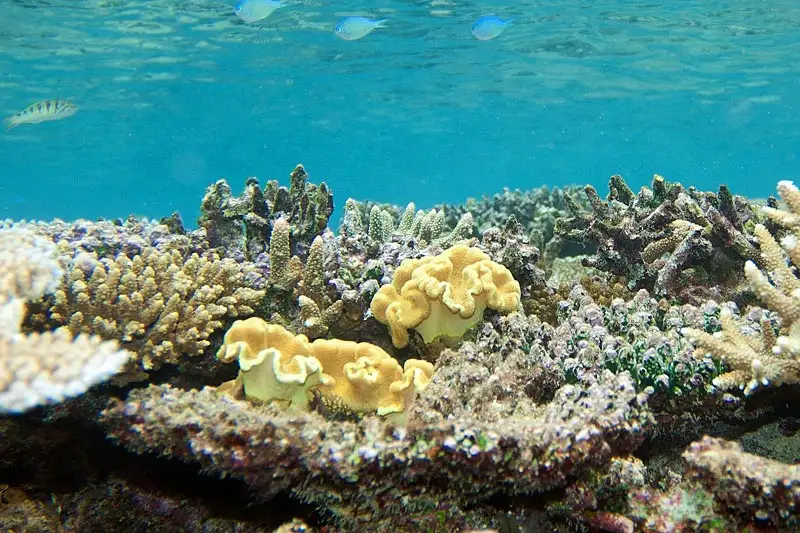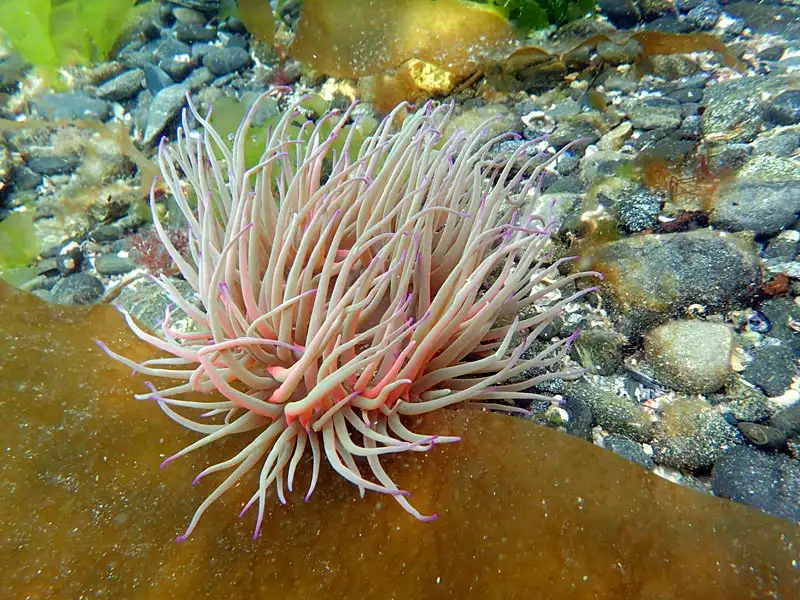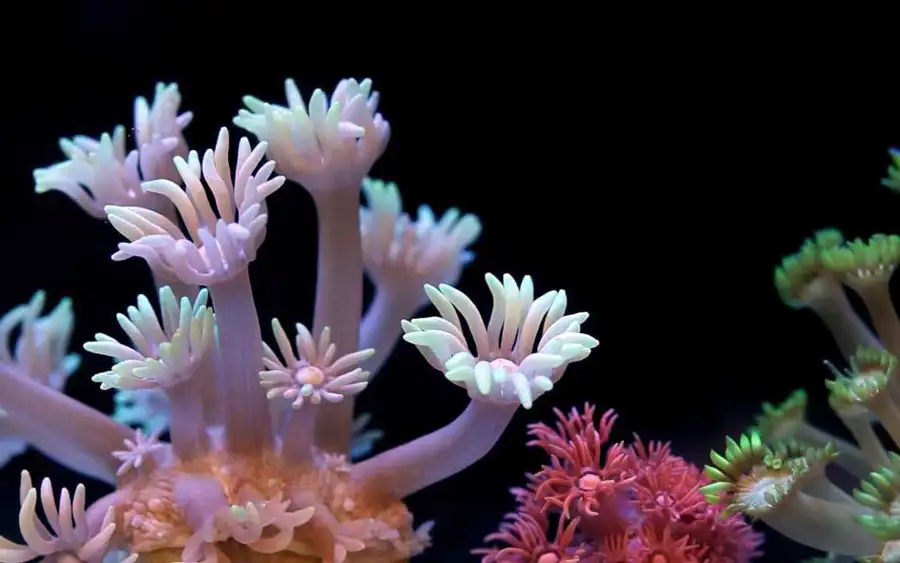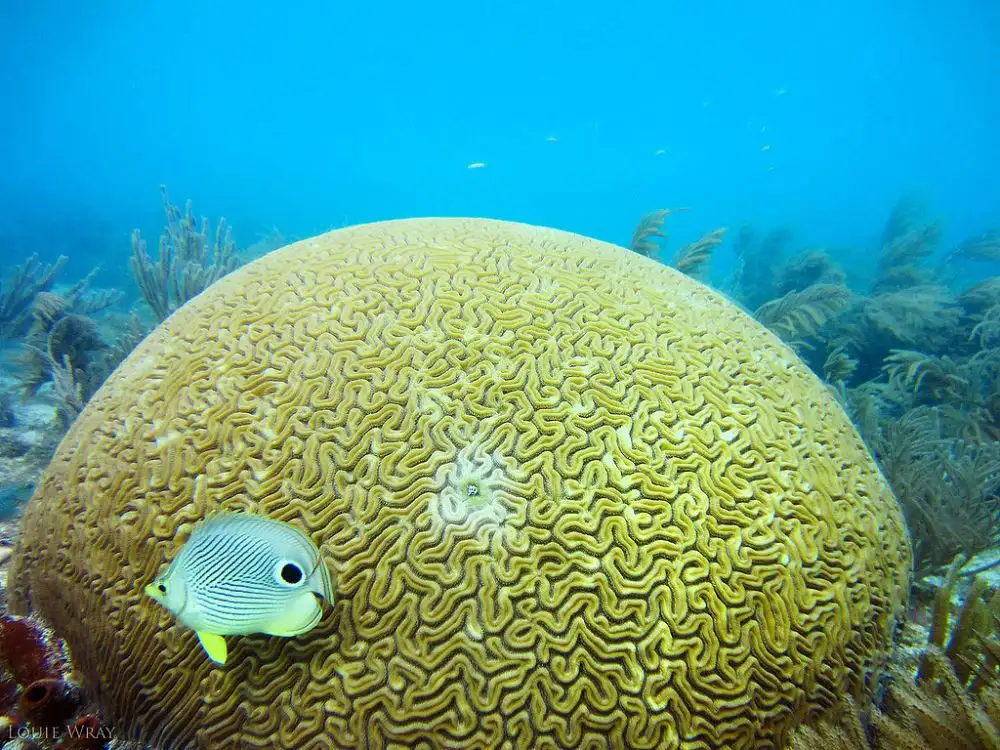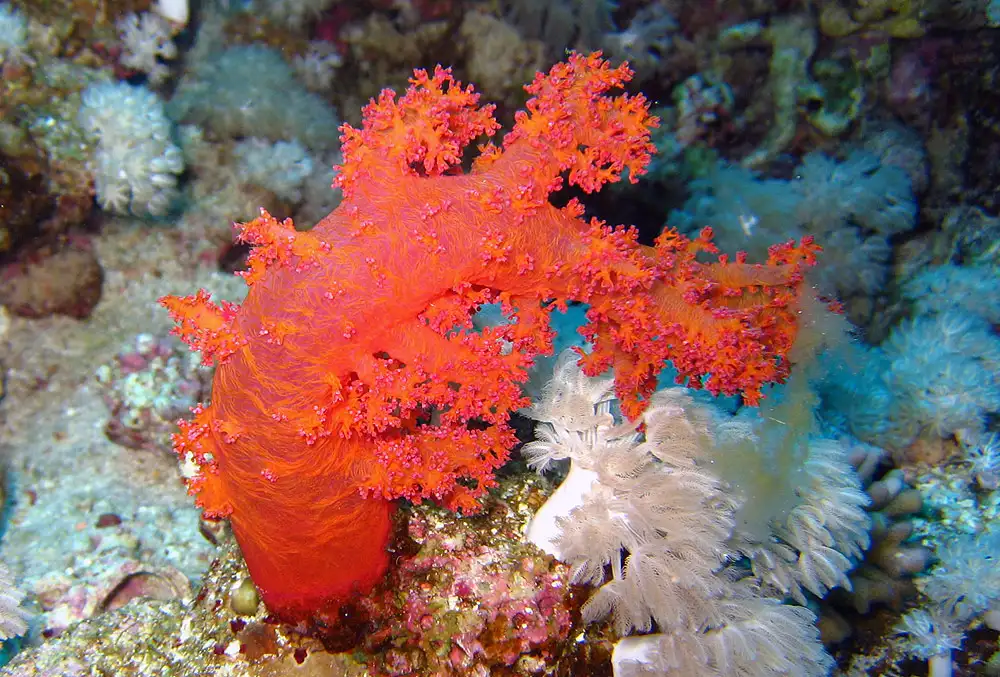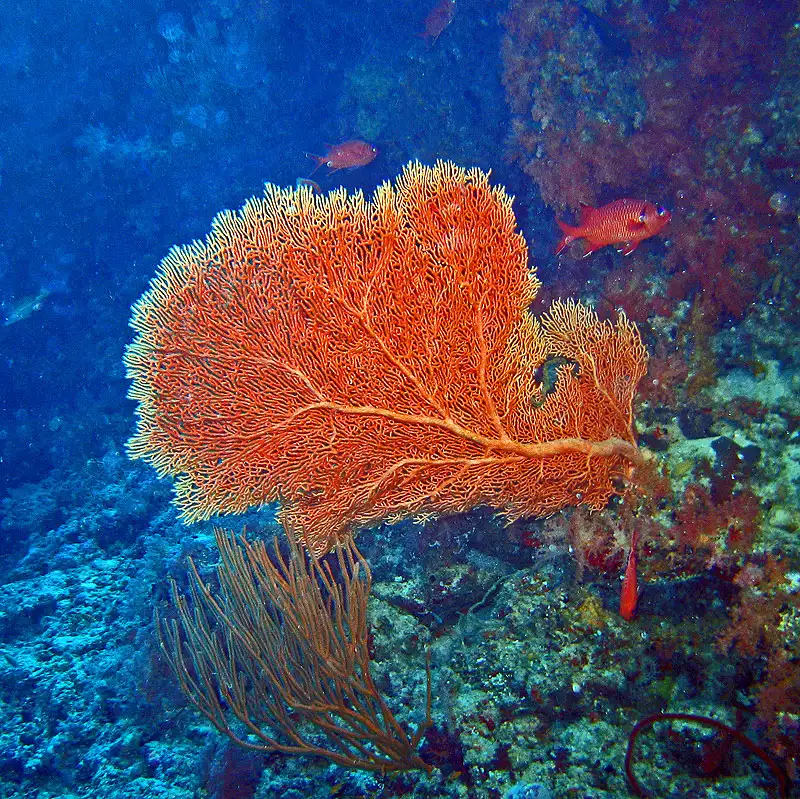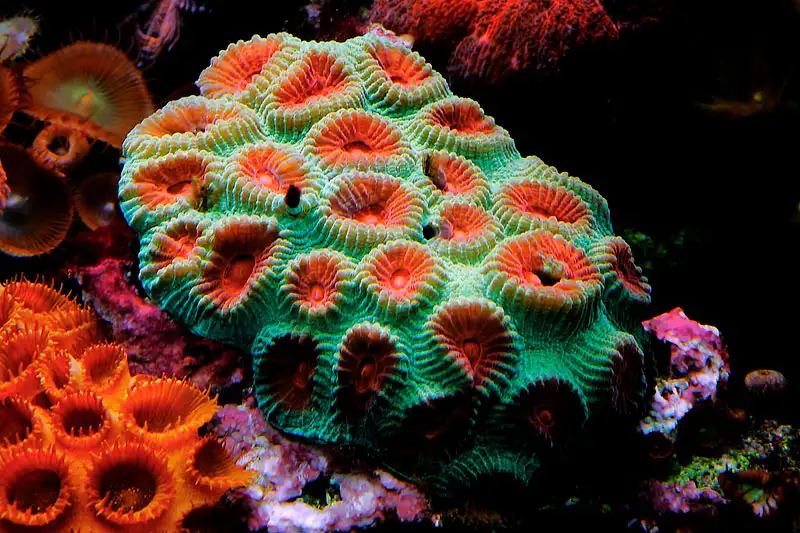Elegant Leather Coral
IUCN
LCBasic Information
Scientific classification
- name:Elegant Leather Coral
- Scientific Name:Sarcophyton elegans
- Outline:Echinodermata
- Family:Alcyoniidae Sarcophyton
Vital signs
- length:Disc 10–30 cm; up to 40–60+ cm
- Weight:Colony mass varies; no standard figure
- lifetime:Long‑lived colonial soft coral
Feature
Photosymbiotic leather coral; periodic sloughing; sexual & asexual reproduction; readily aquacultured by fragging.
Distribution and Habitat
Indo‑Pacific reef flats, lagoons and upper slopes (≈1–25 m) with moderate flow.
Appearance
Mushroom‑like stalk and disc; bright yellow‑cream tones; dense retractile polyps forming a floral carpet.
Details
Sarcophyton elegans is an Indo‑Pacific leather (toadstool) soft coral in family Alcyoniidae. Colonies have a stout stalk and a flat to cup‑shaped disc densely covered by retractile polyps. It hosts Symbiodiniaceae, deriving most energy from photosynthesis and supplementing with suspended particulates.
Ecology & Biology
Nutrition: photosymbiosis plus capture of micro‑zooplankton/POC.
Reproduction: sexual spawning/planulation and asexual fission/fragmentation; widely aquacultured by fragging.
Self‑cleaning: periodic sloughing of the outer layer to shed films/sediments; temporary closure is normal.
Identification
Mushroom‑like silhouette with slightly upturned disc margins; colours often golden‑yellow, cream, beige. Compared with S. glaucum, S. elegans tends to show brighter yellow tones and a more even disc; definitive ID may require sclerite microscopy.
Colony size & Longevity
Disc diameter: typically 10–30 cm; up to 40–60+ cm.
Height: ~8–30 cm.
Life: long‑lived on stable reefs; multi‑year to decades.
Range & Habitat
Tropical Indo‑Pacific reefs—reef flats, lagoons and upper outer‑reef slopes (≈1–25 m) with moderate flow to clear sediments.
Threats & Conservation
Stressors: warming/bleaching, sedimentation/turbidity, pollution, severe storms.
Trade: aquarium collection may affect local stocks; ex situ aquaculture reduces wild harvest needs.
IUCN: generally Not Evaluated (NE) at species level; protection via MPAs, water‑quality control and sustainable trade.
FAQ
Q1. Why does it look dull or closed? Likely in a sloughing phase for self‑cleaning; should reopen within days.
Q2. What light/flow does it prefer? Moderate–strong light and moderate flow for colour and sediment removal.
Q3. Is propagation feasible? Yes—routine fragging with clean cuts and healing flow.
Q4. How to distinguish from other Sarcophyton? Use colour, disc shape and polyp density; confirm with sclerites if needed.


